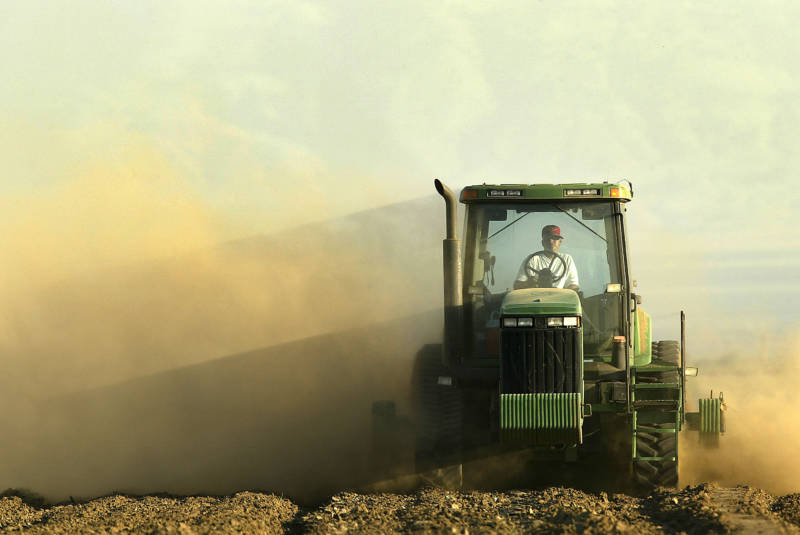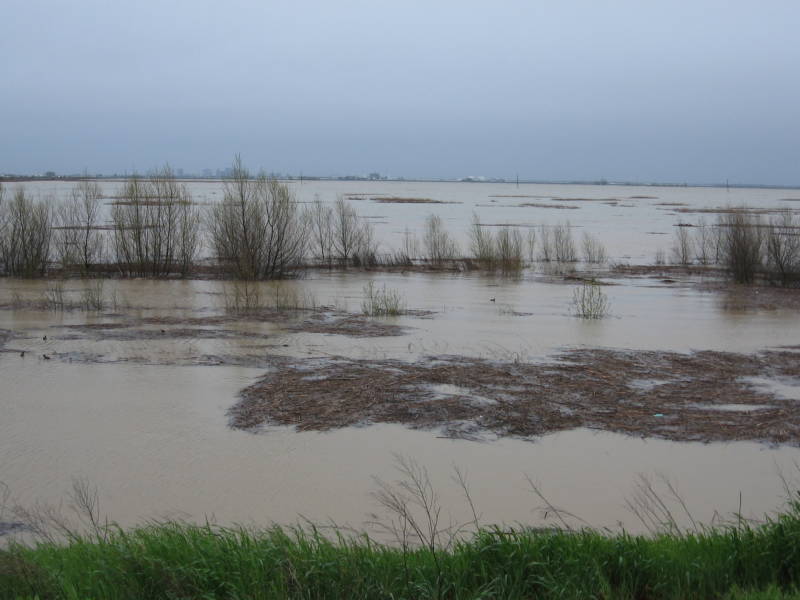Big plans to revamp the Valley’s piecemeal flood management system…if there’s money for it
Now that the state’s revamped Central Valley Flood Protection Plan (big PDF) is out for public perusal, the question is whether the political will — and the cash — will be there to make it happen.

The Sacramento and San Joaquin river basins run through the valley and can overflow their banks threatening more than a million people and an estimated $69 billion in assets, according to the report. The current flood management system has been in place for about a hundred years and was designed specifically to keep water from the rivers off the land so that people could grow crops. Now the system has varied uses including conservation of habitat, water supply and water quality. The old system really isn’t up to the job anymore and almost everyone agrees that it will take a serious investment to bring it up to snuff.
“The system itself is beyond its design life,” says civil engineer Mike Mierzwa. “Think of it like an automobile. If you have a car it’s not going to run at top efficiency for 300,000 miles.” Mierzwa, who advises the state Department of Water Resources (DWR) explained to me that, “We’ve put a lot of ‘flood miles’ on the Central Valley’s flood management system and it’s really time for us to go through and find additional capital to actually improve its level of performance to today’s current design standards and needs.”
DWR outsiders are cautiously optimistic about the ambitious report. “This plan is really a framework. It’s not a plan,” says Jeffrey Mount, a geologist who directs the Center for Watershed Sciences at UC Davis. Mount says he considers the plan to be a step in the right direction. “If I could tweak anything it would be that this would be more integrated with other planning processes happening right now,” he told me. He’s concerned that the report punts on some serious questions about how climate change will impact the system and how conservation can be encouraged. The framework does mention those things, but leaves them to be studied more intensely down the road.
[module align=”left” width=”half” type=”pull-quote”]”People have this perception that you are going to let the water run wild across the farms and ruin everybody’s livelihood. Nobody’s talking about that.”[/module]
Mierzwa and Mount both seem excited by the idea of more bypasses — swathes of land next to rivers, set aside to carry excess water overland before returning it to the river. “They are very expensive because as you are going through and expanding you literally have to buy land,” said Mierzwa to explain why there haven’t been any new bypasses for 100 years. “But as you go through and you buy that land, you get a flood risk reduction benefit, you get an environmental benefit, and the benefits are shared throughout the entire system,” he concluded. The problem, however, is that the same land is highly coveted by real estate developers.
Mount is a huge proponent of bypasses. He’s not content to see the levees strengthened. He wants California’s long-term plan to recognize that restoring wetlands and other biologically diverse landscapes is not at odds with agricultural goals. “People have this perception that you are going to let the water run wild across the farms and ruin everybody’s livelihood,” he sighed. “Nobody’s talking about that. We’re talking about some strategic areas to set the levees back, to expand bypasses, which will in some cases impact agriculture, but in many cases it won’t.”

Some farmers are already seeing benefits from allowing their land to be used for bypasses. Those who farm the Yolo Bypass, for example, got one-time lump-sum payments from the state, for use of the land (though some have suggested that a yearly payment would better serve farmers in planning for uncertain futures). Most of the time farmers can still grow crops — often rice — and they can do it on land that effectively costs them a lot less. They may lose their crops in a really big flood year, but the state’s payment is intended to make up for those infrequent occurrences.
The Central Valley Flood Protection Plan has to be approved by the flood board in July before it can take affect. During the next couple of years Mierzwa says DWR will focus on working with local groups to assess specific project needs, build capacity and talk about financing strategies. Mount says the cost of this plan is the “big, scary 800 pound gorilla” in the room. “It’s going to be hugely expensive. And we’ve come into a time when the federal government is no longer showing up with a fistful of cash for flood control projects.”
DWR put a price tag on its plan ranging between $14 – $17 billion dollars and insists that the state will only be responsible for part of that money. Mount says that’s an underestimate. “One of the big dangers is that local plans are often driven by development,” he explained. “It tends to be kind of ad hoc, rather than system-wide.”
2 thoughts on “Keeping Central Valley Crops and People Safe From Floods: A Costly Proposition”
Comments are closed.

The flood easements of the Yolo Bypass were purchased decades ago by the State of California. Compensation was a one-time payment. There are no “yearly” payments to owners or farmers of those lands. Those individuals that do farm the Bypass lands assume all the risks associated with either not being able to plant a crop or the loss of a planted crop due to periodic flood events.
Thanks, T. Good catch. We’ve revised the post to make this clearer.